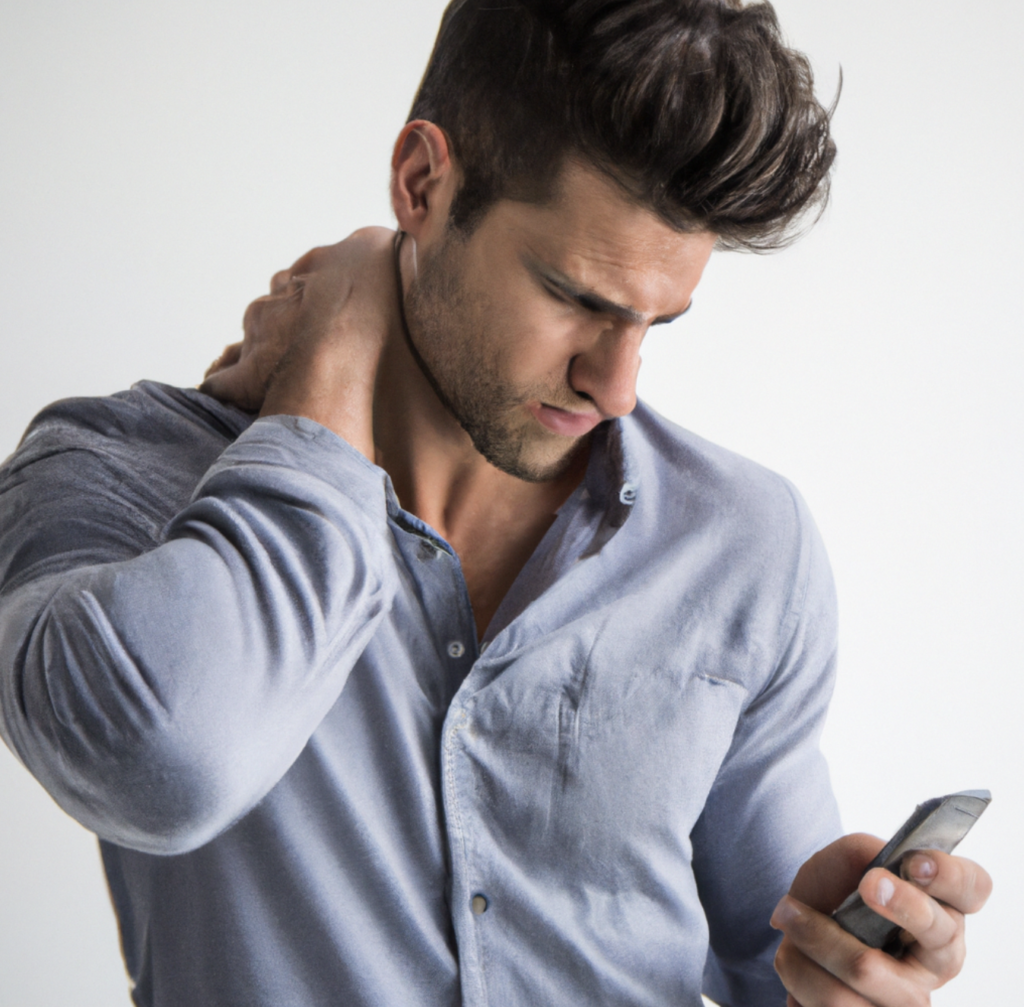
is your cell phone to blame for that headache?
"You have heard it a thousand times by now probably – but even today one of the most common pieces of advice I give patients with neck pain and headache is to change their cell phone use."
+David Woznica, MD, MS
Many of my patients have a hypermobile physiology, repetitive stress jobs, or were in sports/accidents that can injure the neck, meaning the deeper tissues of the neck, such as the spinal ligaments, experienced strain. The job of these ligaments is to hold your spinal column stiff and limit defined movements. This means that when ligaments are injured a level of instability can occur at the spinal level.
So…what does this have to do with headaches, neck pain and phone use?
There are types of headaches called cervicogenic headaches.
These can involve pain in one side of neck and one side of head (and sometimes even the arm on the same side), while another variety causes pain on both sides of neck and head and is associated with activities like hairdressing, carpentry and driving.[i]
Often there is not a single exact thing that is pinpointed as the cause of this type of headache, but is often felt to come from either a variety of sites (joints, discs, etc.) or considered a final common pathway for neck disorders.[ii],[iii]
While a complete discussion of ligaments and instability is outside the scope of this post, an important piece to understand is that ligaments are only a part of part of the stabilizing system of the spine, and that muscles are another component of spinal stability.[iv] Stronger musculature can make up for some of the stiffness lost when spinal ligaments are strained and too loose.
Back to cell phones.
When we look down at our phones for prolonged times (obviously intending to educate ourselves but instead ending up scrolling Instagram, let’s be honest) we are often at a 45-degree neck angle. That whole time, the neck is relying upon a combination of ligament stiffness, disc strength, and muscular strength to keep things safe and stable.
Safe and stiff is important, this is what avoids strain of tissues, irritations to joints and never and so on. Neck regional stiffness has recently been tested at this 45-degree angle, and stiffness at the upper, middle and cervical regions were all found to be lowered.[v]
So there you are, minding your own business while liking various posts, and relying (at least partly) on your neck muscles to keep you safe and stable. The neck of course has other plans; it is obviously bored and wants to save energy for when you’re back moving around. So then what kicks in is an affect called the cervical flexion relaxation response (FRP) – by having your neck flexed (looking down) for a period of time, the muscles begin to relax and shift the load of your head to deeper tissues like ligaments and discs. People with neck pain have been shown to have a different FRP than people without neck pain.[vi]
What this all adds up to (45-degree bend + lowered stiffness + FRP) is that when we use our phones, we often hold our necks in a forward and downward position, which can put extra strain on the cervical spine and its supporting muscles and ligaments, but then the muscles relax because of FRP and more load is put on the ligaments.
To prevent these issues:
• practice good posture when using electronic devices
• take frequent breaks and stretches
• limit screen time
Strengthening of the neck intrinsic muscles can be helpful, though this should be done with the guidance of a physical therapist – there are many devices I see marketed for neck strengthening that have ended up causing pain flares in many people.
Prolotherapy, PRP (platelet-rich plasma) and other cellular treatments delivered to the ligaments can treat cervical instability and its resulting pain conditions, often in cases where physical therapy or medications do not provide sufficient relief.
A physician typically administers these treatments directly into the affected ligaments or other tissues of the cervical spine, using a guided technique such as fluoroscopy or ultrasound to ensure safety and accurate placement.
The best solution is to prevent the issue from happening – so be sure to emphasize proper ergonomics for your neck, whether you live on your phone, laptop or tablet.
Dr. Woznica is ready to create a custom prolotherapy treatment plan for you that is tailored to your specific injury and lifestyle. He will discuss which prolotherapy treatment is best for your injury, how many sessions he believes you will need, estimated costs, and answers any questions you may have prior to your first treatment.
"Our goal is to provide fast, minimally invasive pain relief to get you back to doing the things you love."
+David Woznica, MD, MS
Have a question about Prolotherapy? Ask Dr. Woznica! Email us your questions at ContactUs@WozWellness.com or text or call anytime at 844.GO.PROLO / 844-467-7656.
Sources:
[i] Page P. Cervicogenic headaches: an evidence-led approach to clinical management. Int J Sports Phys Ther. 2011 Sep;6(3):254-66. PMID: 22034615; PMCID: PMC3201065..
[ii] Bogduk N., Cervicogenic headache: anatomic basis and pathophysiologic mechanisms. Curr Pain Headache Rep, 2001. 5(4): p. 382–6
[iii] Sjaastad O.Fredriksen T.A.Pfaffenrath V., Cervicogenic headache: diagnostic criteria. The Cervicogenic Headache International Study Group. Headache, 1998. 38(6): p. 442–5
[iv] Panjabi MM. The stabilizing system of the spine. Part II. Neutral zone and instability hypothesis. J Spinal Disord. 1992 Dec;5(4):390-6; discussion 397. doi: 10.1097/00002517-199212000-00002. PMID: 1490035.
[v] Hofstetter L, Häusler M, Schweinhardt P, Heggli U, Bron D and Swanenburg J (2021) Influence of Axial Load and a 45-Degree Flexion Head Position on Cervical Spinal Stiffness in Healthy Young Adults. Front. Physiol. 12:786625. doi: 10.3389/fphys.2021.786625
[vi] Murphy, Bernadette A. DC, PhD*; Marshall, Paul W. PhD†; Taylor, Heidi Haavik BSc (Chiro), PhD‡. The Cervical Flexion-Relaxation Ratio: Reproducibility and Comparison Between Chronic Neck Pain Patients and Controls. Spine 35(24):p 2103-2108, November 15, 2010. | DOI: 10.1097/BRS.0b013e3181cbc7d8
